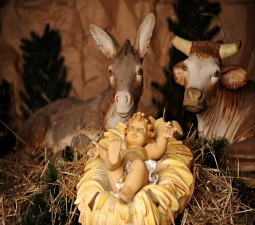The Church Way Up North
Catholicism Is Growing in a Land That Once Had One Believer

Iceland sits in a chilly pocket of the Atlantic due east from southern Greenland, west of Scandinavia and northwest of the British Isles. A jumble of hissing volcanoes and frigid glacial ice, it was settled by the Vikings in the ninth century. Back then, Icelanders celebrated the winter and summer solstices, not Jesus’ birth and resurrection. But in the year 1,000, Christianity finally washed ashore — specifically, the Latin rite.
Soon, Benedictine and Augustinian monasteries dotted the land, and a bishop named Thorlák Thorhallsson began leading the people. After his death, Iceland’s national assembly declared Thorhallsson a saint.
When the Reformation occurred in the 16th century, however, Catholicism was tossed out the window. Lutheranism became the country’s religion, and Catholicism wasn’t even allowed to be practiced on the island.
That restriction held until 1857, when two French priests received permission to row ashore and minister to French seamen. Once the French priests landed, Catholicism was poised for a comeback. But after 300 years of Lutheranism, it was a tough sell to the Icelanders. Hence, the lone Catholic in the early 20th century, some 50 years after the French priests’ arrival.
Nevertheless, the Catholics persevered, and the Church ever so slowly began to grow. By 1970, there were 1,000 Catholics in the country.
In 1984, Pope John Paul II declared St. Thorlák patron saint of Iceland. St. Thorlák is honored annually on July 20, the day in 1198 that his relics were enshrined in the cathedral he presided over in Skáholt, and on Dec. 23, the day of his death and his feast day in the Church.
And today, in 2014, there are those 11,500 Catholics scattered throughout the country’s sole diocese.
Much of the recent growth in the Church’s numbers can be credited to Iceland’s Eastern European and Filipino immigrants, not converted Icelanders. Tradition runs deep, after all. But clearly, there’s hope for the future.
Reykjavik’s Cathedral
With such a pint-sized Catholic community, it’s not surprising that most of the country’s houses of worship are small churches and chapels scattered throughout Iceland’s larger cities. But it does have one impressive place of note: Christ the King Cathedral in Reykjavik. Christ the King, consecrated in 1929, is a Neo-Gothic structure, which, for many years, was actually the largest church in Iceland. (Today, it’s Hallgrimskirkja, a Lutheran/Church of Iceland parish church.) In 2000, Christ the King was made a “minor basilica” in honor of the millennium anniversary of the Icelanders’ acceptance of the Christian faith.
The imposing, gray-stone building sits on a grassy patch of land in the city center near many of Reykjavik’s foreign embassies.
When you initially pass through its doors, Christ the King is not all that impressive. Its stained-glass windows are plain geometric shapes; there’s not a wealth of statuary, paintings or objets d’art; and the altar is plain and small. A drab gray-green paint covers the walls, while the floor is comprised of old tiles in pumpkin and paprika hues, which compete with a pinkish marble altar and altar rail.
But once you get over an initial flush of disappointment at the lack of grandeur and take a good look around, you’ll notice the cathedral’s gems. There’s the statue of St. Thorlák, looking somber in his bishopric attire — how hard he must have toiled to seed the infant Church into the hearts of people unschooled in the ways of the Lord. There’s also the Via Crucis, a series of beautiful paintings created in Bavaria in the early 20th century, and the “Reykhólar Mary,” a rather crudely carved, wooden rendition of Mary and the Christ Child that clearly must have an intriguing past. Indeed it does.
Believed to be from the 14th century, experts posit the statue proudly sat in a rural church until the Reformation, when a farmer tucked it into his home in Reykhólar for safekeeping. For generations, while Catholicism was banned in Iceland, the statue was passed from family member to family member.
In 1926, when it was finally safe to openly practice the faith, the statue was dusted off and donated to the church. In 1980, a special crown was crafted and placed atop Mary’s head, which Pope John Paul II blessed during his papal visit.
Sometimes it’s the modest things in life, not the glitzy ones, which tell the most powerful stories.
Melanie Radzicki McManus writes from Sun Prairie, Wisconsin.
Planning Your Visit
Christ the King offers Mass Saturdays at 4pm (Spanish) and 6pm (Icelandic) and on Sundays at 10:30am (Icelandic), 1pm (Polish) and 6pm (English).
- Keywords:
- Dec. 14-27, 2014

















